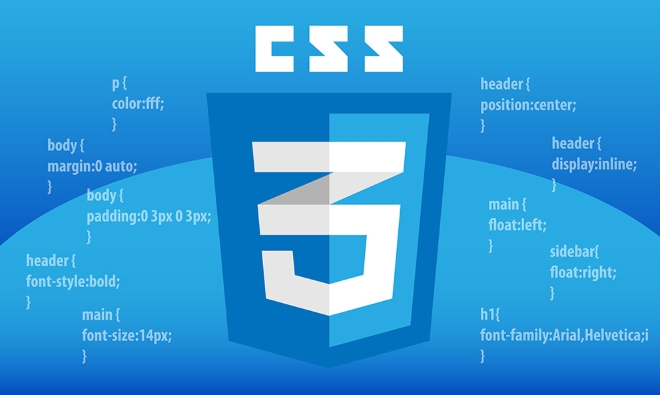Describe the CSS `counter-reset` and `counter-increment` properties
Jul 18, 2025 am 04:00 AMCSS' counter-reset and counter-increment are used to automatically number HTML elements. 1. Use counter-reset to initialize or reset the counter, for example, section { counter-reset: sub-section;} to create a counter named sub-section; 2. Increment the counter through counter-increment, such as h3 { counter-increment: sub-section;} to increment each h3 title number; 3. Use the content attribute to display the counter in combination with pseudo-elements, such as h3::before { content: counter(section) "." counter(sub-section);} to implement nested numbers. These functions are suitable for scenarios such as automatic generation of title numbers, custom list styles, multi-level numbers and UI progress indicators, and complex layout logic can be completed without JavaScript.

If you've ever wanted to automatically number headings, list items, or sections in your HTML using just CSS, counter-reset and counter-increment are the tools you need. These properties let you create and manipulate counters directly in your stylesheets — no JavaScript required.

What Are Counters in CSS?
At their core, CSS counters are variables maintained by the browser that can be incremented and displayed. They're especially useful for things like numbered headings, ordered lists, or multi-level numbering (like 1.1, 1.2, 2.1, etc.).
You don't declare them like variables in JavaScript. Instead, you "initialize" them with counter-reset and "update" them with counter-increment .

How to Use counter-reset
The counter-reset property is used to create a new counter or reset an existing one to a specific value (default is 0).
For example:

section {
counter-reset: sub-section;
} This creates a counter called sub-section and resets it every time a new section starts — which is perfect for nested numbering.
You can also set it to start at a different number:
section {
counter-reset: sub-section 5;
} Now, the first sub-section inside this section will start at 6 (because counter-increment typically adds 1 by default).
A few things to keep in mind:
- Counters are scoped to the element they're defined on and its children.
- You can define multiple counters in one declaration:
counter-reset: section 0 sub-section 0;
How to Use counter-increment
Once a counter exists, you use counter-increment to increase its value . This is usually applied to elements that should trigger a number change — like subscriptions or list items.
Example:
h3 {
counter-increment: sub-section;
} Each time an h3 appears inside a parent that has a sub-section counter, it increases that counter by 1.
Like counter-reset , you can increment multiple counters at once:
h2 {
counter-increment: section sub-section 2;
} Here, section increases by 1, and sub-section jumps up by 2.
Important note: By default, counter-increment increases by 1 unless specified otherwise.
Displaying Counters with content
Creating and updating counters isn't enough — you also need to show them. That's where the content property comes in, often used with ::before or ::after pseudo-elements.
Example:
h3::before {
content: "Section " counter(sub-section) ": ";
} This would display something like “Section 2:” before each h3 .
For nested counters (like chapter and subscription), you can do:
h3::before {
content: counter(section) "." counter(sub-section) " ";
}That gives you output like “2.1”, “2.2”, etc., depending on how many times each counter was reset and incremented.
Common Use Cases
Here are some practical scenarios where these properties shine:
- Auto-numbered headings : Perfect for documentation sites or long-form content.
- Custom list styling : You can build your own ordered lists without relying on
<ol></ol>. - Multi-level counters : Like 1.1, 1.2, 2.1, etc., great for technical specs or legal documents.
- Visual indicators : Counters can help track progress visually in UI components.
Just remember:
- Always reset a counter before using it.
- Increment only when needed.
- Don't forget to display it with
content.
That's basically how counter-reset and counter-increment work. It might seem a bit abstract at first, but once you get the hang of scoping and nesting, they become powerful tools for layout logic.
The above is the detailed content of Describe the CSS `counter-reset` and `counter-increment` properties. For more information, please follow other related articles on the PHP Chinese website!

Hot AI Tools

Undress AI Tool
Undress images for free

Undresser.AI Undress
AI-powered app for creating realistic nude photos

AI Clothes Remover
Online AI tool for removing clothes from photos.

Clothoff.io
AI clothes remover

Video Face Swap
Swap faces in any video effortlessly with our completely free AI face swap tool!

Hot Article

Hot Tools

Notepad++7.3.1
Easy-to-use and free code editor

SublimeText3 Chinese version
Chinese version, very easy to use

Zend Studio 13.0.1
Powerful PHP integrated development environment

Dreamweaver CS6
Visual web development tools

SublimeText3 Mac version
God-level code editing software (SublimeText3)
 What are common CSS browser inconsistencies?
Jul 26, 2025 am 07:04 AM
What are common CSS browser inconsistencies?
Jul 26, 2025 am 07:04 AM
Different browsers have differences in CSS parsing, resulting in inconsistent display effects, mainly including the default style difference, box model calculation method, Flexbox and Grid layout support level, and inconsistent behavior of certain CSS attributes. 1. The default style processing is inconsistent. The solution is to use CSSReset or Normalize.css to unify the initial style; 2. The box model calculation method of the old version of IE is different. It is recommended to use box-sizing:border-box in a unified manner; 3. Flexbox and Grid perform differently in edge cases or in old versions. More tests and use Autoprefixer; 4. Some CSS attribute behaviors are inconsistent. CanIuse must be consulted and downgraded.
 Describe the `vertical-align` property and its typical use cases
Jul 26, 2025 am 07:35 AM
Describe the `vertical-align` property and its typical use cases
Jul 26, 2025 am 07:35 AM
Thevertical-alignpropertyinCSSalignsinlineortable-cellelementsvertically.1.Itadjustselementslikeimagesorforminputswithintextlinesusingvalueslikebaseline,middle,super,andsub.2.Intablecells,itcontrolscontentalignmentwithtop,middle,orbottomvalues,oftenu
 What is the accent-color property?
Jul 26, 2025 am 09:25 AM
What is the accent-color property?
Jul 26, 2025 am 09:25 AM
accent-color is an attribute used in CSS to customize the highlight colors of form elements such as checkboxes, radio buttons and sliders; 1. It directly changes the default color of the selected state of the form control, such as changing the blue check mark of the checkbox to red; 2. Supported elements include input boxes of type="checkbox", type="radio" and type="range"; 3. Using accent-color can avoid complex custom styles and extra DOM structures, and maintain native accessibility; 4. It is generally supported by modern browsers, and old browsers need to be downgraded; 5. Set accent-col
 How to compile SCSS to CSS?
Jul 27, 2025 am 01:58 AM
How to compile SCSS to CSS?
Jul 27, 2025 am 01:58 AM
InstallDartSassvianpmafterinstallingNode.jsusingnpminstall-gsass.2.CompileSCSStoCSSusingthecommandsassinput.scssoutput.css.3.Usesass--watchinput.scssoutput.csstoauto-compileonsave.4.Watchentirefolderswithsass--watchscss:css.5.Usepartialswith_prefixfo
 How to change text color in CSS?
Jul 27, 2025 am 04:25 AM
How to change text color in CSS?
Jul 27, 2025 am 04:25 AM
To change the text color in CSS, you need to use the color attribute; 1. Use the color attribute to set the text foreground color, supporting color names (such as red), hexadecimal codes (such as #ff0000), RGB values (such as rgb(255,0,0)), HSL values (such as hsl(0,100%,50%)), and RGBA or HSLA with transparency (such as rgba(255,0,0,0.5)); 2. You can apply colors to any element containing text, such as h1 to h6 titles, paragraph p, link a (note the color settings of different states of a:link, a:visited, a:hover, a:active), buttons, div, span, etc.; 3. Most
 CSS transitions tutorial
Jul 26, 2025 am 09:30 AM
CSS transitions tutorial
Jul 26, 2025 am 09:30 AM
CSStransitionsenablesmoothpropertychangeswithminimalcode,idealforhovereffectsandinteractivefeedback.1.Usethesyntaxtransition:propertydurationtiming-functiondelay;todefinetransitions,liketransition:background-color0.3sease0.1s;.2.Specifytransition-pro
 How to purge unused CSS?
Jul 27, 2025 am 02:47 AM
How to purge unused CSS?
Jul 27, 2025 am 02:47 AM
UseautomatedtoolslikePurgeCSSorUnCSStoscanandremoveunusedCSS;2.IntegratepurgingintoyourbuildprocessviaWebpack,Vite,orTailwind’scontentconfiguration;3.AuditCSSusagewithChromeDevToolsCoveragetabbeforepurgingtoavoidremovingneededstyles;4.Safelistdynamic
 HTML `style` Tag: Inline vs. Internal CSS
Jul 26, 2025 am 07:23 AM
HTML `style` Tag: Inline vs. Internal CSS
Jul 26, 2025 am 07:23 AM
The style placement method needs to be selected according to the scene. 1. Inline is suitable for temporary modification of single elements or dynamic JS control, such as the button color changes with operation; 2. Internal CSS is suitable for projects with few pages and simple structure, which is convenient for centralized management of styles, such as basic style settings of login pages; 3. Priority is given to reuse, maintenance and performance, and it is better to split external link CSS files for large projects.






